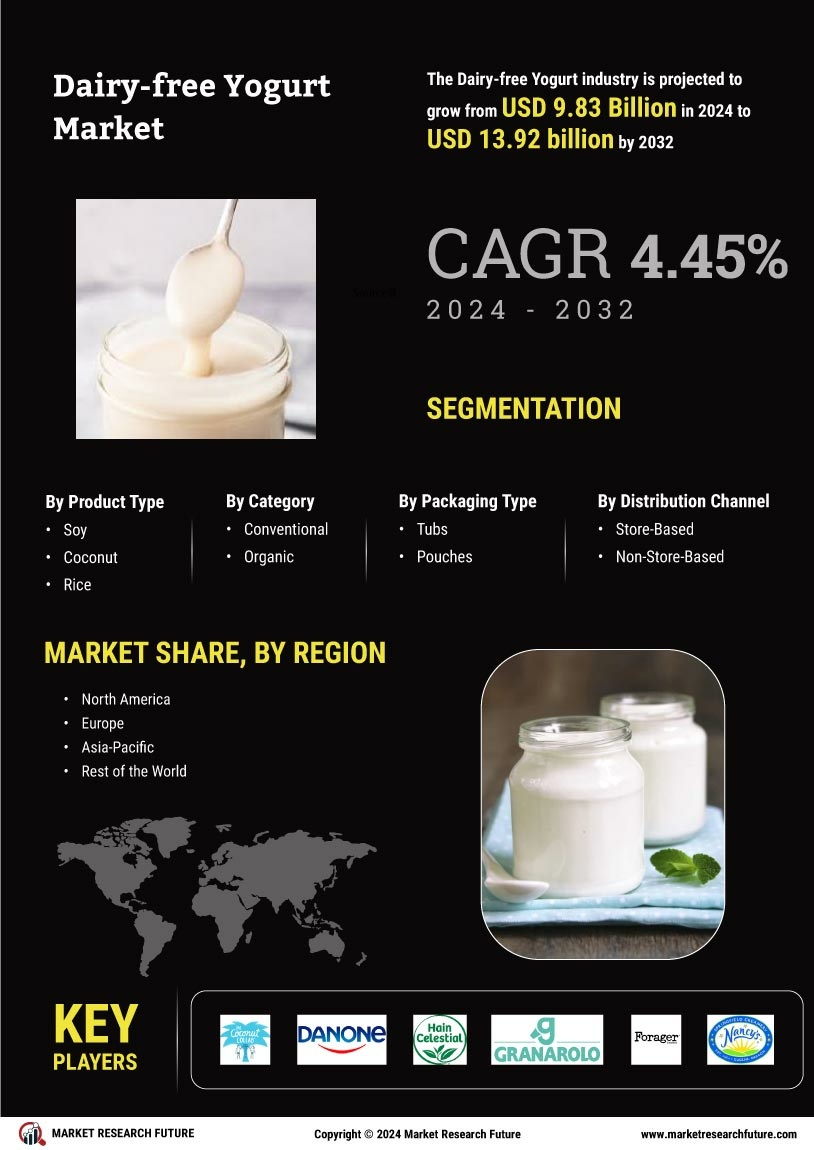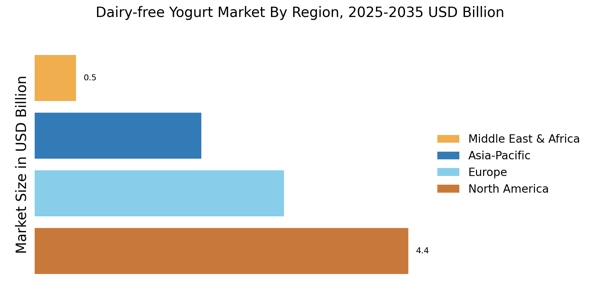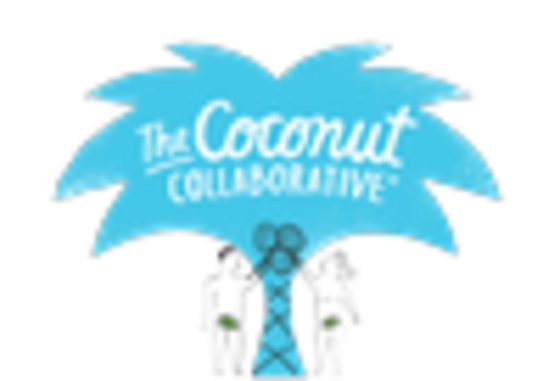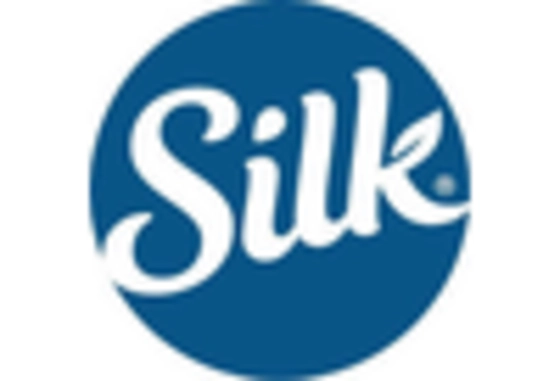Rising Veganism
The increasing adoption of veganism is a pivotal driver for the Dairy-free Yogurt Market. As more consumers embrace plant-based diets for ethical, environmental, and health reasons, the demand for dairy alternatives, including yogurt, has surged. Recent data indicates that the number of individuals identifying as vegan has grown significantly, with estimates suggesting a rise of over 300% in the last decade. This trend is likely to continue, as younger generations show a preference for plant-based options. Consequently, the Dairy-free Yogurt Market is experiencing a notable expansion, with brands innovating to cater to this demographic by offering diverse flavors and formulations that align with vegan principles.
Diverse Flavor Profiles
The Dairy-free Yogurt Market is witnessing a surge in demand for diverse flavor profiles, which serves as a significant market driver. As consumers become more adventurous in their culinary choices, brands are innovating to introduce unique and exotic flavors that appeal to a broader audience. This trend is reflected in market data, which shows that flavored dairy-free yogurts are gaining traction, accounting for a substantial share of the market. The introduction of flavors such as coconut, mango, and even savory options is likely to attract consumers who may not have previously considered dairy-free alternatives. This diversification in flavor offerings is expected to enhance the appeal of the Dairy-free Yogurt Market.
Health Benefits Awareness
Growing awareness of the health benefits associated with dairy-free products is a crucial driver for the Dairy-free Yogurt Market. Consumers are increasingly seeking alternatives that are lower in saturated fats and cholesterol, which dairy-free yogurts typically provide. Research indicates that many individuals are turning to these products to manage lactose intolerance or to reduce inflammation. The Dairy-free Yogurt Market is responding to this trend by emphasizing the nutritional advantages of their offerings, such as probiotics and added vitamins. This shift in consumer behavior is likely to bolster market growth, as health-conscious individuals prioritize products that align with their dietary needs.
Sustainability Initiatives
Sustainability initiatives are increasingly influencing consumer purchasing decisions, making them a vital driver for the Dairy-free Yogurt Market. As environmental concerns rise, consumers are gravitating towards products that are perceived as more sustainable. Dairy-free yogurts, often made from plant-based ingredients, are viewed as a more eco-friendly option compared to traditional dairy products. Companies within the Dairy-free Yogurt Market are responding by adopting sustainable practices, such as using recyclable packaging and sourcing ingredients responsibly. This commitment to sustainability not only attracts environmentally conscious consumers but also positions brands favorably in a competitive market, potentially leading to increased sales and market share.
Innovative Packaging Solutions
Innovative packaging solutions are emerging as a key driver for the Dairy-free Yogurt Market. As consumers seek convenience and sustainability, brands are exploring new packaging formats that enhance user experience while minimizing environmental impact. Recent trends indicate a shift towards eco-friendly materials and single-serve options, which cater to on-the-go lifestyles. This evolution in packaging is likely to resonate with consumers who prioritize both functionality and sustainability. The Dairy-free Yogurt Market is thus adapting to these preferences, potentially leading to increased consumer engagement and loyalty. As brands continue to innovate in this area, the market is expected to see further growth.


















Leave a Comment